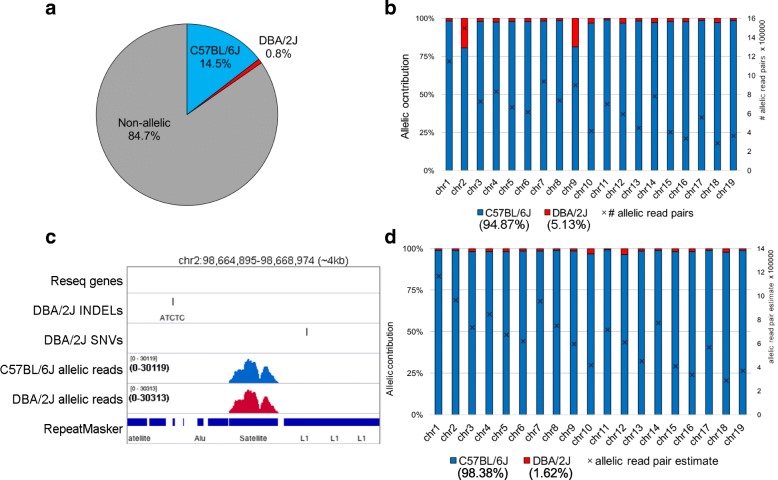Fig. 3.
Quantifying allele-specific alignment error rates. To estimate the rate of false-positive errors for allelic analysis of DNAme data, WGBS reads generated from C57BL/6 J mice [11] were aligned to the MEA-generated C57BL/6 J x DBA/2 J pseudogenome, and the percentage of DBA/2 J-specific read alignments was scored. The expected allelic contribution from C57BL/6 J is 100%, as these cells are of C57BL/6 J origin. a The percentages of reads aligning uniquely to the C57BL/6 J and DBA/2 J (false-positive) pseudogenomes, as well as the number of aligned reads that did not overlap with a genetic variant (non-allelic) is shown. b The false-positive alignment rate for each autosome, along with the total number of aligned allelic read pairs, is shown. c Genome browser screenshot of a locus that displays a high rate of false-positive allele-specific alignment to a repeat annotated as Satellite DNA by RepeatMasker and devoid of genetic variants. d To assess the false-positive rate exclusive of repetitive Satellite DNA, allele-specific read alignments over these Repbase annotated repetitive sequences, as recognized by RepeatMasker, were culled and the rate of false-positive allele-specific alignments recalculated over each autosome as in (b)

